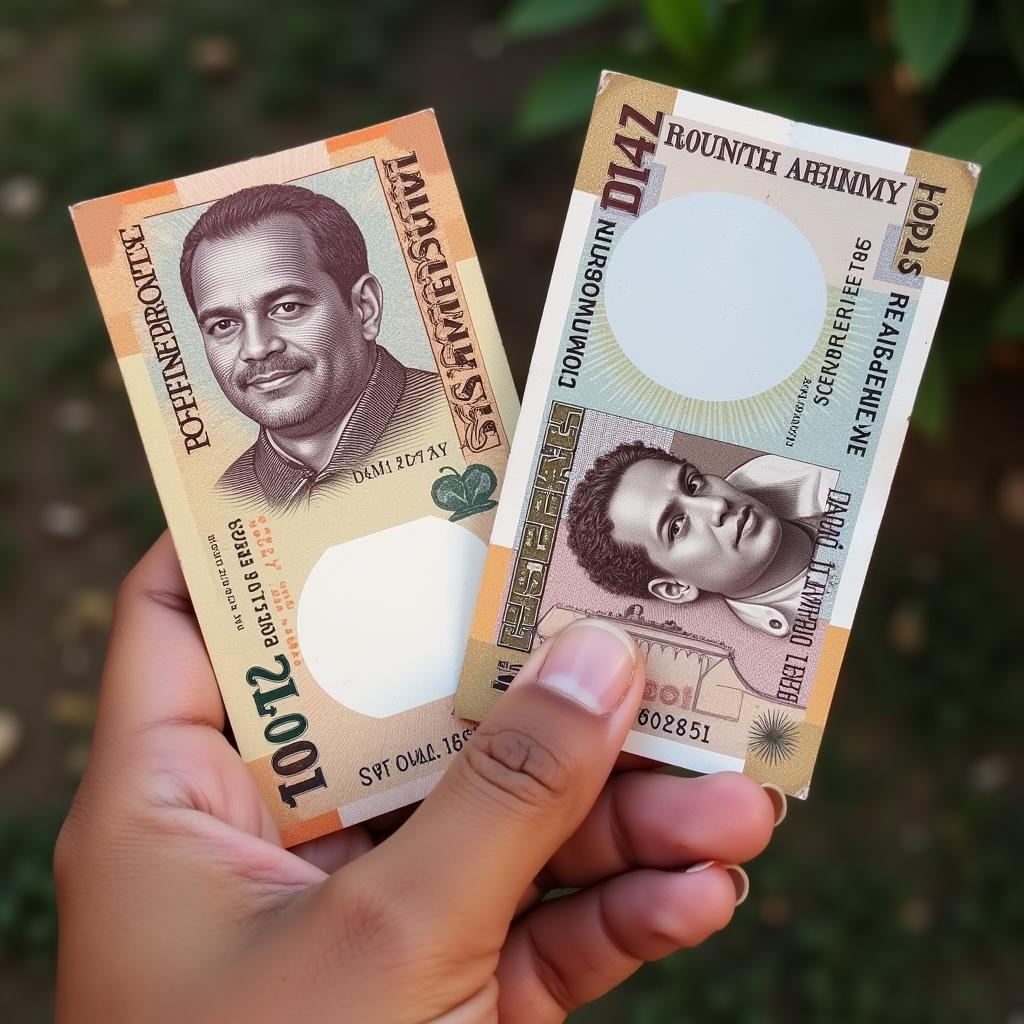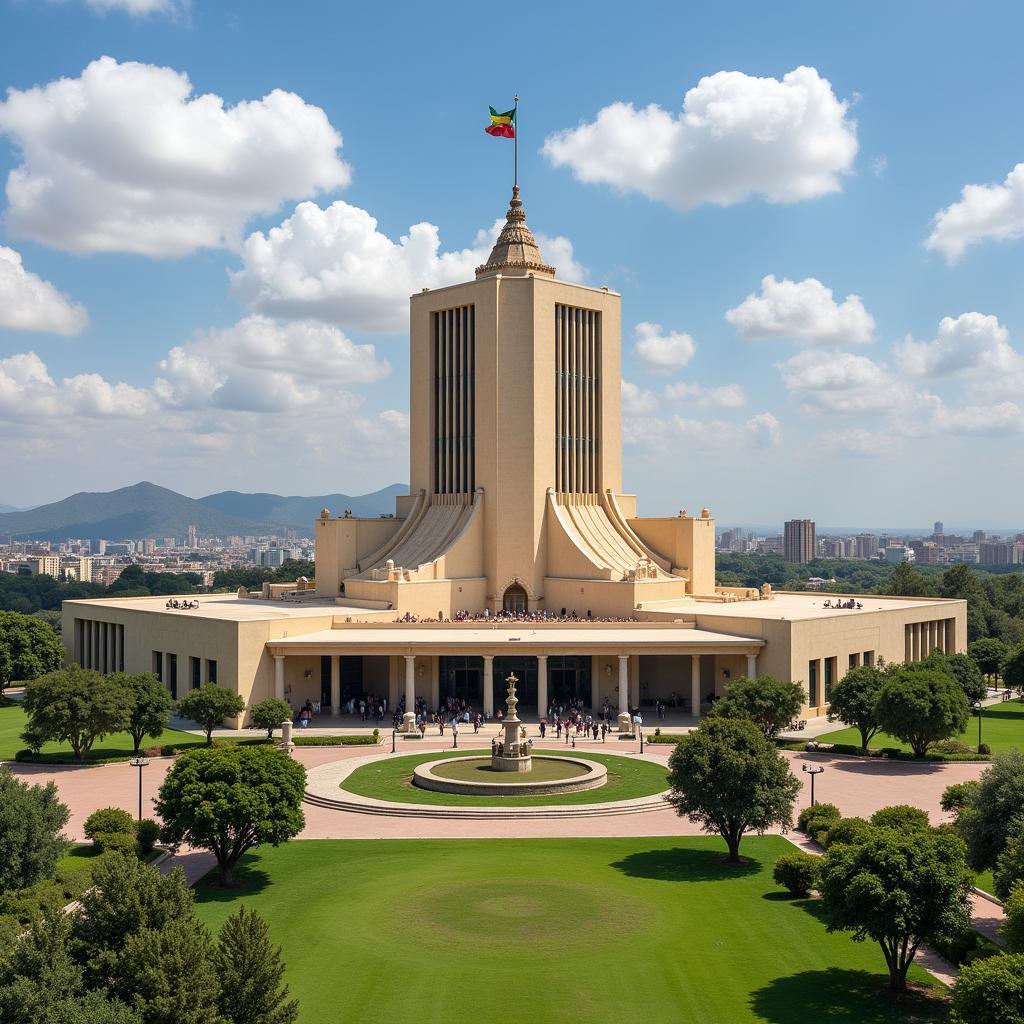African Cultural Center Architecture Concept
The concept of an African cultural center architecture is more than just bricks and mortar; it’s a tangible expression of a continent’s rich and diverse heritage. From the sweeping curves of a Malian mud mosque to the geometric patterns of a Ndebele homestead, these centers strive to embody the spirit of Africa, reflecting its history, art, music, and cultural practices.
Embracing African Architectural Heritage
A fundamental element of any African cultural center’s design is its deep-rooted connection to the continent’s diverse architectural heritage. This isn’t about replicating historical structures but rather drawing inspiration from traditional forms, materials, and building techniques.
For instance, the Great Mosque of Djenné in Mali, built entirely of mud, showcases the mastery of Sudano-Sahelian architecture. Its towering minarets and intricate mud-brick patterns have inspired countless contemporary designs. Similarly, the conical thatched roofs of traditional houses in Southern Africa, like those found in the Lesotho highlands, offer a model for sustainable and climate-responsive design.
Functionality and Community: The Heart of the Design
African cultural centers are not museums frozen in time. They are vibrant spaces for community gathering, cultural exchange, and the transmission of knowledge across generations. This philosophy of communal living needs to be reflected in the architecture.
Open courtyards, reminiscent of traditional African homesteads, can act as central spaces for events, performances, and informal gatherings. Multifunctional spaces that can be adapted for different activities, like workshops, exhibitions, and ceremonies, ensure the center remains a dynamic hub of cultural activity.
Sustainability and the Use of Local Materials
In a continent facing the brunt of climate change, sustainability is not just a trend but a necessity. African cultural centers are increasingly embracing eco-friendly designs that minimize environmental impact.
The use of locally sourced and sustainable materials, like bamboo, compressed earth blocks, and thatch, not only reduces the building’s carbon footprint but also helps preserve traditional craftsmanship. Incorporating passive cooling techniques, rainwater harvesting systems, and solar energy further enhances the center’s sustainability.
Blending Tradition and Modernity
While celebrating Africa’s rich past, these centers are also spaces for innovation and creative expression. The challenge for architects is to seamlessly blend traditional aesthetics with contemporary design elements.
This might involve reinterpreting african heritage symbols in a modern context, incorporating traditional motifs into contemporary furniture, or using cutting-edge technology to create immersive cultural experiences.
Creating a Global Platform for African Culture
The concept of an African cultural center architecture extends beyond the physical structure. It’s about creating a platform that showcases the richness and diversity of African cultures to the world. These centers can host international exhibitions, festivals, and conferences, fostering dialogue and understanding between Africa and the global community.
Through thoughtful design and a commitment to preserving cultural heritage, African cultural centers can become beacons of creativity, innovation, and cross-cultural exchange. They have the potential to not only shape the architectural landscape of the continent but also redefine the way the world perceives Africa.
FAQ
What is the importance of incorporating traditional African architecture in modern cultural centers?
Incorporating traditional African architecture in modern cultural centers is crucial for preserving heritage, promoting cultural identity, and showcasing the ingenuity of ancestral building practices. It creates a visual dialogue between the past and present, fostering a sense of continuity and belonging for future generations.
How can African cultural centers contribute to sustainable development?
African cultural centers can champion sustainable development by utilizing eco-friendly building materials, incorporating energy-efficient systems, and promoting responsible waste management practices. They can also serve as platforms for raising awareness about environmental issues and showcasing sustainable solutions rooted in African traditions.
What are some of the challenges faced in designing and building African cultural centers?
Challenges range from securing funding and navigating complex land tenure systems to finding a balance between preserving tradition and incorporating modern architectural elements. It’s also important to ensure the center remains accessible and relevant to diverse communities.
Looking for More Information on African Architecture?
Explore these resources for further insights:
- Discover more about the fascinating world of african city crossword clue.
Need Help Bringing Your African Cultural Center Vision to Life?
Contact us! We’re passionate about supporting projects that celebrate African heritage.
Call: +255768904061
Email: kaka.mag@gmail.com
Visit: Mbarali DC Mawindi, Kangaga, Tanzania
Our team is available 24/7 to answer your questions and discuss your project needs.



